
Chickens
For Meat
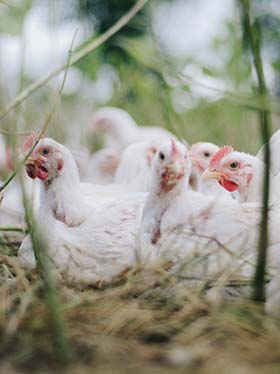
With huge welfare issues surrounding intensively reared chickens, raising broiler chickens (fast-growing chickens for meat) is becoming more popular with the smallholder.
This article shares my experiences of rearing day-old chicks, free-range and at a slower pace where birds can perform their natural behaviours foraging, scratching and perching. I also suggest some slightly slower growing strains that have time to develop some muscle which gives better texture and flavour to the meat.
I assume that you are not a complete novice in rearing and dispatching chickens because this sort of project is not for the faint-hearted. I will focus on the differences between raising fast-growing broilers to the slower-growing pure breed chickens we are used to rather than the basics of rearing chicks.
Commercial table chickens
The ‘Standard Chickens’ raised commercially for the supermarkets are reared indoors on wood shavings. There is an amount of clearing taking place daily to remove dead birds, and there is a culling of unhealthy birds. Birds often die from stress-induced heart attacks. Acceptable mortality rates are between 5 and 10 per cent in the commercial industry.
By the end of the six weeks, each bird has less floor space than a piece of paper takes up. The wood shavings (that aren’t changed) can be full of ammonia causing ‘hock burns’ on their legs.
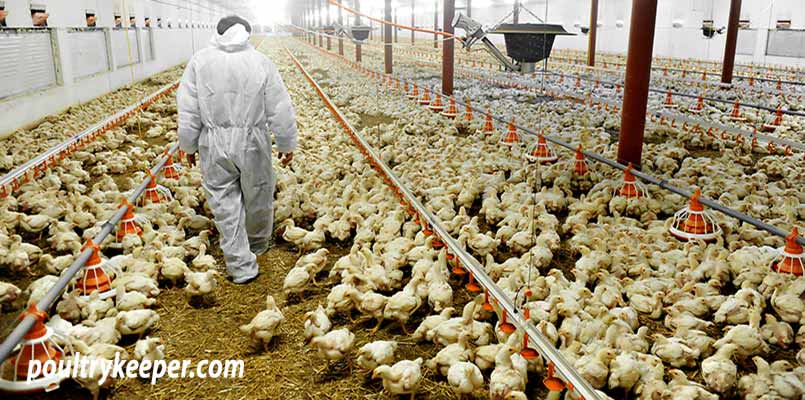
The aim of the game for us as backyard poultry keeper is not to rear a commercial broiler chicken under the same intensive conditions, but to raise them at a slower pace with space to exercise outdoors on fresh grass and enough room to behave like real chickens.
We do need to try to slow down the growth to a more natural level to prevent the problems associated with such rapid growth.
Ross/Cobb types
Fast-growing breeds (such as Ross/Cobb, Mastergris types) put on weight quickly. That is, you can expect to get a bird of around 2-2.5Kg in as little as six weeks in a commercial set-up.
The big problem with this is that genetically they breed these birds to be inherently obese.
Reaching this weight in six weeks certainly feels unnatural when it usually takes around 20 weeks for a typical pure breed to achieve this weight.

When I raise these chickens for the table, I give them a little bit of extra exercise, free-range but most importantly, additional time for their rearing and feeding.
I extend the rearing of Ross/Cobb type of birds to approximately 9-10 weeks, still making them a fast return on investment but with fewer problems.
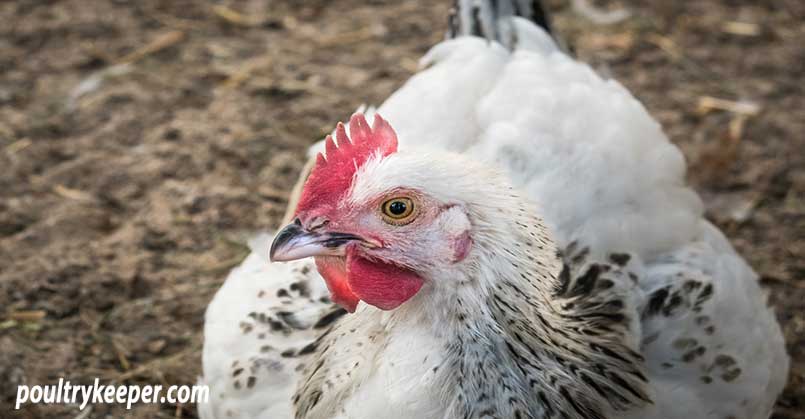
Are you sure you want fast growth?
It’s worth saying at this point; even when extending their rearing like this, I get the odd bird that needs dispatching ahead of time.
Since first writing this article (several years ago now), I have updated it to include other types of fast-growing commercial strains of meat chickens.
The reason is that these days, I tend to select slightly slower growing types such as Hubbard or Sasso because having researched traditional table poultry, better taste comes with slightly firmer meat and intramuscular fat.
To get this, you need active birds and slower rearing.
Hubbard types
Other fast-growing strains such as Hubbard Specials are slightly slower growing and in my opinion better suited to smallholdings and free-range rearing. I can typically raise Hubbard Specials to the same size as Ross/Cobb types in about 12-14 weeks.
The additional four weeks certainly helps. I use a similar amount of feed.
SASSO types
SASSO chickens get imported from France. It is the only source of the original parent breeding stock in the UK.
SASSO has maintained a large gene pool of traditional slower-growing broiler chickens which have a distinctive darker meat colour with taste and texture.
Traditional hybrid crosses
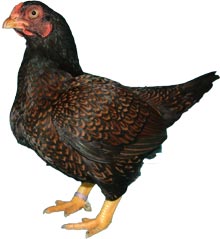 There are several traditional hybrid crosses from pure breeds that will grow in 8 to 10 weeks. These are broad-breasted, and most have white feathers and skin for a clean carcass.
There are several traditional hybrid crosses from pure breeds that will grow in 8 to 10 weeks. These are broad-breasted, and most have white feathers and skin for a clean carcass.
I have scoured my old poultry books and added a list of these traditional meat/table poultry birds here.
Suppliers of day-old chicks
I think we are lucky as smallholders and back garden keepers to be able to purchase these types of commercial birds in small numbers. If you require only a small amount of birds, it is probably better to club together with a few other people to make a reasonable size order.
Poulet Anglais
Simon Skinner at Poulet Anglais, Old Bolinbroke in Lincolnshire.
While he mainly supplies Hubbard’s slow-growing strains, JA757, 787, Coloryield and Mastergris, he also has some Ross chicks.
Simon supplies chicks by the thousands but is approachable if you are looking for smaller numbers. He can often arrange for a driver to meet you somewhere locally when they are delivering birds.
His phone number is: 01790 763066 and his mobile is 07787 533325.
Cyril Bason
Cyril Bason supplies both commercial rearing units and smallholdings. Based in Stokesay, Shropshire he can provide Ross/Cobb type of birds as day-old chicks or as five-week-old growers off heat. Hubbards are available as day-old chicks.
You can reach Cyril Bason on 01588 673204. The website has further information:
S&T Poultry
Based in Wisbech, Cambridgeshire, Stephen supplies both commercial producers and smallholders. Ross and Hubbard types are available but he also a good selection of SASSO traditional style slower-growing types.
Day-old chicks need at least four weeks notice. You can call Stephen on 07885 718195 or visit his website: www.sandtpoultry.co.uk
If you know of any other suppliers that will supply small numbers of birds, please let me know.
Raising broiler chickens
Start by cleaning and sterilising all housing and equipment before your chicks arrive. Hygiene is, of course of paramount importance to remove the risk of disease.
Your brooder should have solid walls to prevent drafts and a deep bed of wood shavings.
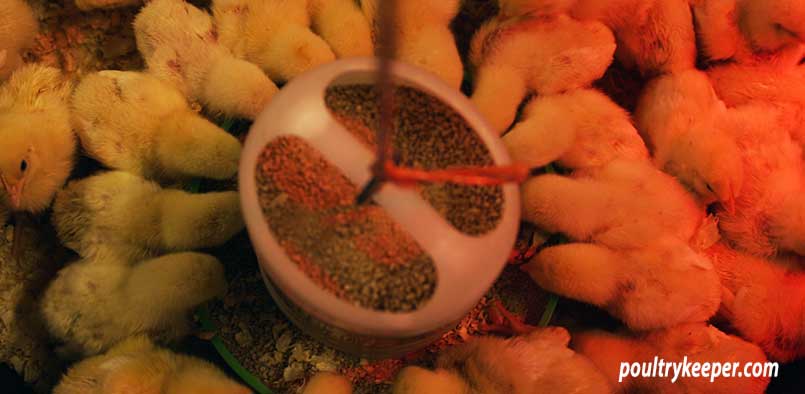
Raise feeders and drinkers, so they do not get faeces or wood shavings in them. I will usually use multiple feeders; you will find these chicks spend a lot of time eating!
Feeding
A good quality non-medicated feed is essential. Start day-olds with chick crumbs for three to four weeks then gradually change over to growers pellets. Extra vitamins added to their water is also a good idea to help them grow correctly. A weak solution of Apple Cider Vinegar (ACV) can also be beneficial (a rate of 0.5% is about the right dilution).
Exercise
Raising broiler chickens yourself does highlight how incredibly fast these birds gain weight (and how ‘unnatural’ this is). Rapid weight gain puts a strain on the birds, so I find they do not have as much energy for exercise as slower-growing types. Expect them to be less energetic than pure breeds.
I ensure birds get enough space to allow them to exercise throughout their growth. I add small logs for them to hop onto and hang sweet corn/cabbages just out of reach, so they have to jump to reach it. It keeps them active, moving and working a little in between meals and prevents boredom and feather pecking.
Lighting
When raising broiler chickens, lighting is essential. I will keep the brooder lit for 24 hours for the first couple of days but then to help slow down their feed intake, I will reduce it to 20 hours from day three to the end of their first week, then cut it to 16 hours in the second week. By the third week, they receive regular daylight hours.
Heating
Use enough heat lamps, hanging securely to prevent overcrowding and make sure there is enough space for chicks to be able to get out of the heat if they want to.
Chicks need heating to maintain their body temperature for the first few weeks. Pure breed table chickens need about five weeks of heat, but fast-growing broiler/meat birds feather up faster so only require 2-3 weeks.
Chicks will be stressed if the temperature is too cold or too hot. Trying to save money on heating is a false economy because theywill have inadequate development and are more likely to catch a disease.
Adequate ventilation is also required to prevent ammonia from building up.
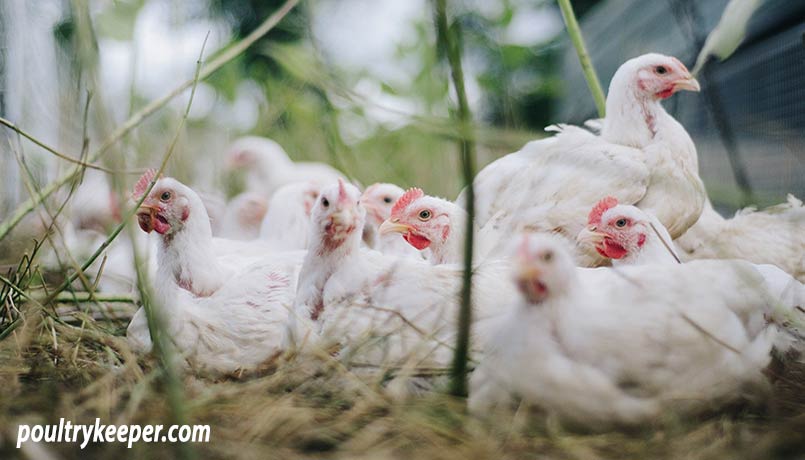
The final day
I’m sure that, like me, no one particularly likes this. Killing an animal is never pleasant, but it helps to know that it has had the best life possible.
For me, raising broiler chickens taught me a great deal about the way we farm standard supermarket chickens and the welfare issues surrounding the industry. I now raise slower-growing chickens for meat, and when buying chickens, I purchase higher welfare chickens.
If you have looked after your birds, given them room to run around free-range, allowed them to express natural behaviours, then they have had a good life, far better than they would have had in an indoor commercial rearing unit. Here is some guidance on how to dispatch a chicken and I hope you enjoy the meat from your chickens.





